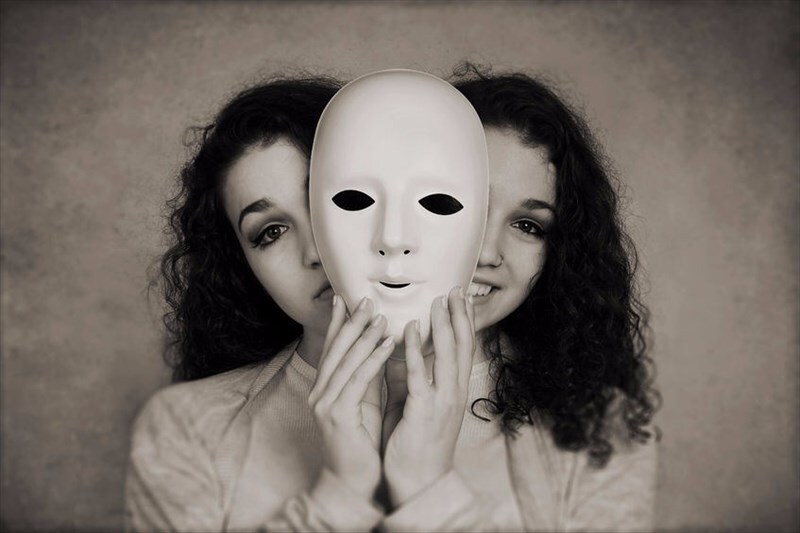Multiple personality, clinically referred to as Dissociative Identity Disorder (DID), is a topic that has always intrigued me, not merely as a concept, but as a window into the depths of human complexity. I’m not a psychologist, nor do I claim to be a spiritual healer. But over the years, my curiosity, personal observations, and informal research have led me to explore how fragmented identities reflect our inner struggles, and perhaps, our unspoken strengths.
In a world obsessed with singular definitions and rigid identities, multiple personality invites a deeper conversation about the mind, emotional experience, and how we adapt to the world.
What Is Multiple Personality? A Psychological Viewpoint
DID manifests through Switching between identities or Alters, each with unique behaviours, voices, and memories. These personalities are often born out of trauma, a defence mechanism to compartmentalise pain. In some cases, the identities may not even be aware of each other.
Often misunderstood or confused with mirroring—the unconscious imitation of another’s behaviour seen especially during childhood development—DID is distinct in that it involves distinct internal identities rather than external mimicry.
Switching can be rapid or slow, and the individual may have no memory of what happened while another Alter was in control. It is as though the psyche, overwhelmed by experience, fragments into specialised roles to manage survival. Therapy, particularly hypnotherapy, often seeks to create dialogue and cooperation among the Alters rather than force integration.
Religion’s Role in Shaping the Perception of Multiple Personality
Religious interpretations of multiple personality are wide-ranging and historically rich. In traditions such as Christianity, Islam, and Judaism, what might today be seen as DID were often interpreted as supernatural possession by angels or demons, with rituals such as exorcism used to ‘cure’ the afflicted. Individuals exhibiting radical personality shifts were sometimes seen as vessels of good or evil.
Eastern traditions, however, tell a different story. For example, Hinduism offers a model of multiple identities through divine avatars. Lord Vishnu has ten avatars, and Goddess Durga nine, each manifesting different characteristics, often tailored to the needs of the cosmic balance. Almost all gods have avatars in ancient Indian scriptures. Here, the presence of many selves within one being is not abnormal but divine.
These religious lenses reflect different attitudes toward identity and fragmentation. The concept of multiple personality in religious terms has been feared, and sometimes revered.
Between Fragmentation and Unity: Mead’s Social Self Theory
Philosopher George Herbert Mead’s Mind, Self, and Society remains one of the most insightful studies into how identity is shaped. Mead argued that the Self is not something we are born with—it emerges through social interaction. As we move through different relationships, environments, and roles, our identities evolve.
He emphasised that humans are not passive beings. Unlike animals, humans can interpret, reflect, and modify responses. Language, he proposed, plays a crucial role in shaping this inner dialogue. Through this symbolic communication, our sense of self becomes more layered.
Mead’s central thesis—that multiple personality is, in a certain sense, normal—suggests that humans are naturally multi-faceted. Our roles as parents, professionals, lovers, and friends activate different social selves. When these roles become fragmented due to trauma or emotional overload, they may manifest in more dramatic forms.
Freud’s Psyche Model: The Conflict Within
Sigmund Freud offered another lens to explore multiple personality through his tripartite model of the psyche: the ID, Ego, and Super-Ego. The ID operates on primal urges and desires. The Super-Ego functions as our internalised moral guide. The Ego mediates between these forces, trying to find balance.
When that balance falters, internal conflict intensifies. The strain between these three forces can result in disorientation, neurosis, or even dissociation. Freud called the ability to manage this pressure Ego strength. A weak Ego cannot maintain unity, which may lead to the mind segmenting itself to manage emotional overload.
This model explains how internal conflict, when unmanaged, creates psychological divides. While Freud’s ideas are often contested today, his notion of an inner battlefield remains a valuable metaphor for DID’s internal chaos.

Astrological Perspectives: Planetary Imprints on the Self
While not scientific in the conventional sense, Vedic Astrology presents a symbolic map of potential selves. It emphasises the interplay between the Sun Sign, Moon Sign, and Rising Sign, each governing a different aspect of personality. It can predict why some people are more intuitive or clairvoyant.
In addition to preparing one’s birth chart, Vedic Astrology also provides separate charts based on key life events, like marriage, career shifts, or past life karmas. These event-based charts capture the subtle shifts in energy that influence behaviour and decisions.
The belief that one person can carry multiple cosmic influences subtly reinforces the idea that identity is multifaceted. Whether or not one subscribes to astrology, it provides a language to understand the dynamic interplay within the mind.
Hollywood’s Fascination with Fragmented Identity
Films like Split and Glass use DID to craft narratives filled with drama, power, and psychological tension. Kevin Wendell Crumb’s character, housing several powerful alters, is a cinematic embodiment of inner war. While the films are stylised and even controversial, they reflect society’s fascination with the idea of hidden potential and untapped strength beneath suffering.
The movies show how trauma can fracture identity—but also how the journey toward healing can make a person more resilient, even exceptional. They tap into transformations that echo our modern mythologies, from comic books to psychological thrillers. These stories also echo themes from the Matrix, where one must awaken to reality through layers of identity and perception.
Trauma, Coping, and the Birth of Selves
Multiple personality is often triggered by childhood trauma. Abuse, neglect, or severe emotional stress can lead to the creation of Alters as coping mechanisms. Even within the same family, siblings can develop entirely different coping strategies because identity is shaped by both circumstance and perception.
Some people cope by becoming extroverted, others retreat inward. These adaptations can calcify into long-term personas, eventually functioning as distinct identities.
Understanding this can help normalise the existence of multiple personality traits and also encourage a more compassionate approach to healing and mental hygiene.
Reframing the Narrative: Multiplicity as Expression
Rather than labelling DID as merely pathological, perhaps we should consider it a form of expressionism of the psyche—an attempt by the mind to express unmanageable pain or unmet needs. Some of the world’s most creative minds have described inner voices or characters who “speak” to them, blurring the line between creativity and mental illness.
Multiplicity can be terrifying, but it can also be illuminating. It can provide access to emotional truths that are otherwise buried.
So, is multiple personality a curse or a blessing? It can be both. When unacknowledged and unsupported, it can lead to confusion, distress, and isolation. But when embraced and worked with consciously, it can become a unique path toward healing, creativity, and even happiness.
We all wear different masks in different situations. DID simply amplifies this common human experience to the point where the masks develop lives of their own. But behind those masks lies the same core longing: to be seen, understood, and whole.
Honouring the Multiple Personality Within
To be human is to be layered, multifaceted, and in constant evolution. Whether viewed through the lens of psychology, religion, philosophy, or even astrology, multiple personality invites us to rethink identity not as a singular, stable entity but as a complex, adaptable force.
While this article emphasises emotional depth and the symbolic nature of multiplicity, it is important to acknowledge that clinical Dissociative Identity Disorder is very real and often requires professional support. There are documented cases where the fragmentation is severe and difficult to manage. In such instances, the role of psychological science, clinical therapy, and structured intervention becomes critical.
If nurtured with compassion, awareness, and support, this multiplicity can lead to profound personal growth. If neglected or stigmatised, it may turn inward, creating chaos. The journey to wholeness is not about eliminating the “other” selves—it’s about integrating them.
In the end, what you feed is what you become.

